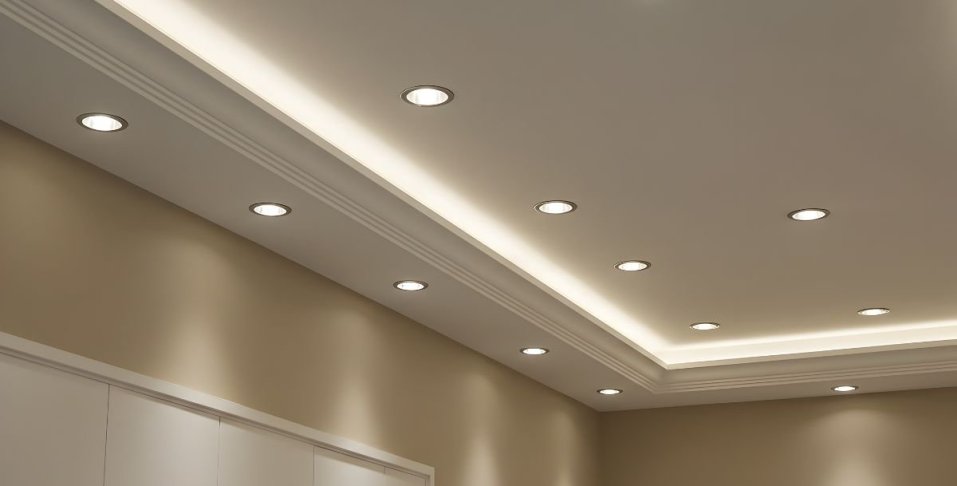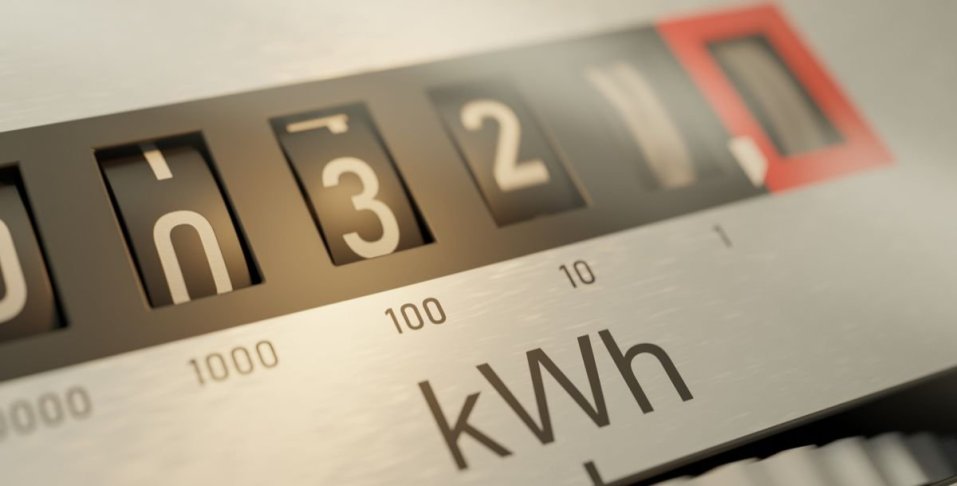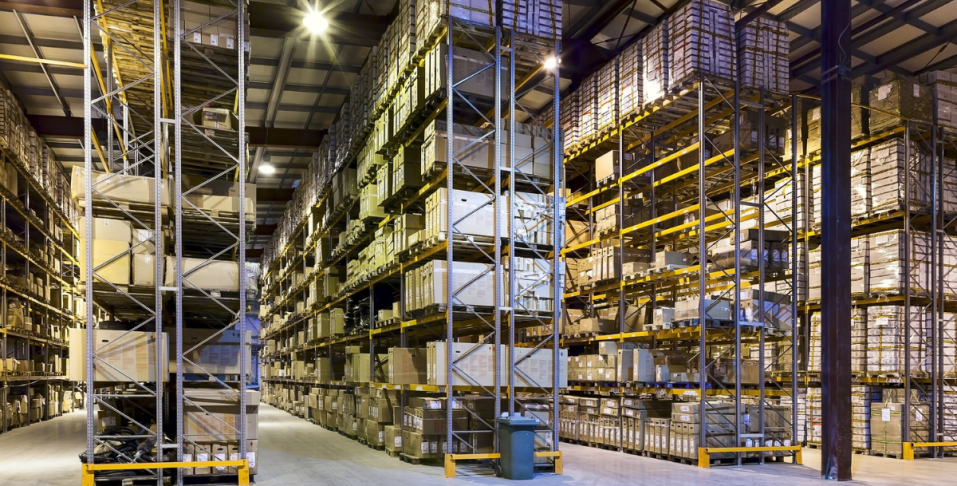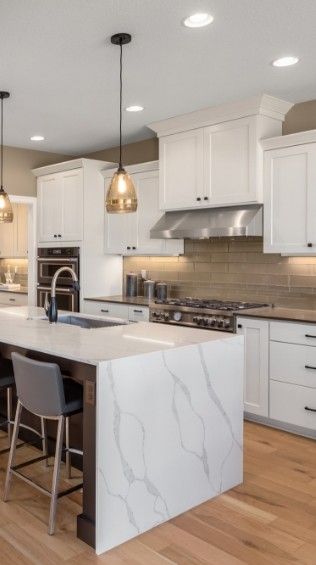What is a Recessed Downlight?
A recessed downlight is a light installed into the ceiling that directs light downward. The light's housing is sunken back into the ceiling, so only the light source and the trim are visible. All wiring of recessed downlights is contained within the ceiling.
Downlights are versatile lighting solutions that can provide task, ambient, or accent lighting while maintaining a clean, sleek look. Learn about our various available downlighting types and their benefits, installation methods, and key features such as CCT, dimming options, industry certifications, and more. Understanding these factors will help ensure the right downlight selection for any space, whether for new construction, retrofit, or remodeling projects.
Three Parts of a Downlight
-
The Lamp: All of our LED downlights are integrated fixtures, so there are no bulbs to replace. Commercial downlights typically have a lifespan of 50,000 hours or more.
-
Housing: This is what the lamp or LEDs are enclosed in. The housing sits above the ceiling.
-
Trim: The trim is the exposed portion of the fixture. Commercial downlights are available in various trims such as smooth, baffle, flush, gimbal, and reflector.
Why Downlights Are an Ideal Commercial Lighting Solution
-
Modern, slim appearance—Most downlights are recessed or surface mounted to the ceiling, saving space overhead.
-
Uniform lighting and reduced glare—Downlights’ recessed design minimizes glare and improves visual comfort. Their beam angles and high-quality optics provide diffused, even lighting without dark spots or hot spots.
-
High operating voltage—Most commercial or industrial spaces have higher input voltage ranges, up to 347V. Commercial downlights can reliably support this.
-
Easy installation— Many commercial spaces have drop ceilings, which makes it easy to install downlights. Simply wire the light in properly (consult your user manual), then use the spring clips to pop the downlights into place, even without an existing can housing in the ceiling. Some downlights even have built-in junction boxes, making installation even easier.
-
Adjustable and customizable— RGB, RGBW, selectable wattage and CCT, and dimmable downlights allow you to customize lighting to your business’s needs. Downlights with the gimbal trim are adjustable and can be angled to highlight specific architecture, artwork, or areas of the room.
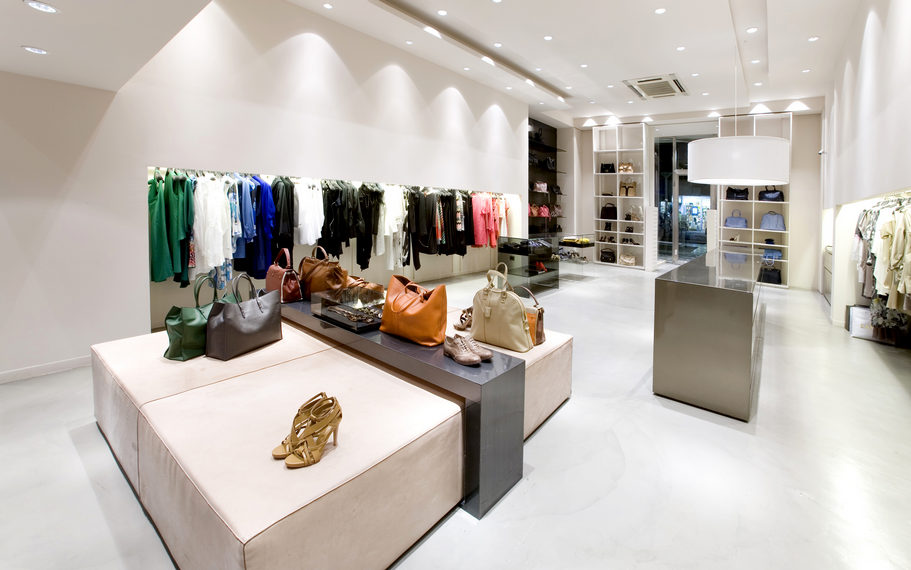

Downlight Applications
Downlights are used in various industrial, commercial, and residential settings. Below are some common applications for downlights:
-
Residential
-
Offices
-
Schools
-
Hotels
-
Commercial kitchens
-
Retail stores
-
Hospitals and clinics
-
Art galleries
Types of LED Downlights
Commercial Downlight
Our commercial-grade downlights can be used in new construction or retrofit projects. They use wide beam angles and a reflector for maximum light output. Commercial downlights are typically recessed deeper into the ceiling than regular recessed lighting to help reduce eye strain and glare.
Commercial downlights have a more durable construction to meet the demands of commercial or industrial environments while maintaining energy efficiency and cost-effectiveness. They are great for new installations or remodeling projects requiring high-performance lighting. They are best for high-output lighting applications such as offices, retail stores, and other commercial environments.
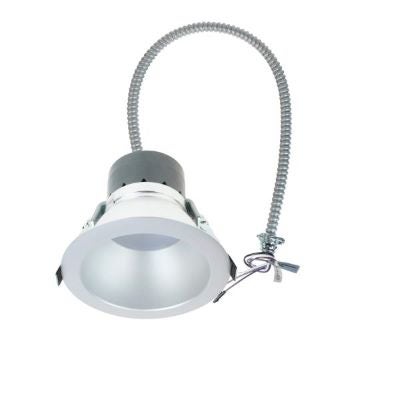

Built-In Junction Box Downlights
A downlight with a built-in junction box saves installation time and space by having the electrical box integrated into the fixture. This simplifies installation by eliminating the need for a separate junction box and additional wiring installed within the ceiling.
Built-in junction box downlights are an excellent choice when the ceiling depth is limited in remodeling projects or new installations. They also increase safety by reducing the number of exposed electrical wires or connections.
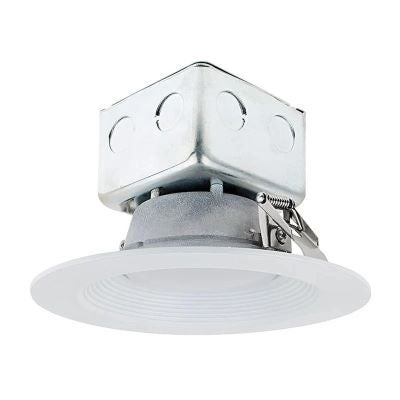

Can Light Retrofit Downlights
Can light retrofit kits upgrade existing can or recessed lighting fixtures to LED technology. These kits let you modernize lighting without needing a full fixture replacement or relamping.
Retrofit kits get screwed into the existing socket and fit directly into the existing can housing using spring clips to update less efficient lighting technologies, like incandescents. Can light retrofit kits fit into standard 4”- 6” can housings. Use gimbal trim on can light retrofits to angle and direct light where needed.
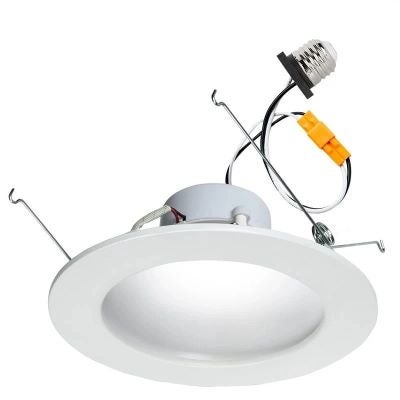

Canless Downlight
Canless downlights have a thinner profile than traditional can lights. They’re an excellent fit for areas with low clearance where traditional recessed can lights won’t fit. They have an external junction box from the light for installation. Canless downlights can be installed in new construction or retrofit scenarios. Use canless downlights with a gimbal trim to direct light where desired.
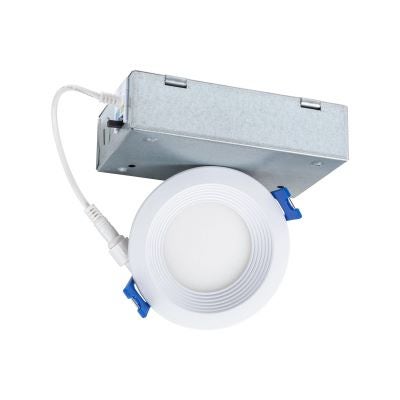

Smart LED Downlights
Smart downlights can be controlled via an app, remote, voice commands, or other smart home systems. They can be grouped, dimmed, color-changed, scheduled, and more through various digital controls. Select colors from a range of RGB colors and tunable whites. Our matter-certified downlights can be easily integrated into a Matter-certified ecosystem like Amazon Alexa, Google Home, Apple HomeKit, and SmartThings, for full lighting control through voice or app-based operation.
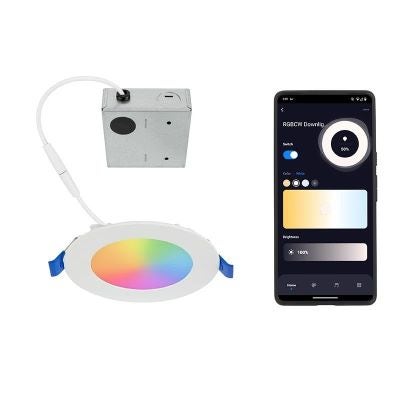

Flush Mount Ceiling Lights
Flush mount ceiling lights have a low profile and don’t require a lot of ceiling clearance to install since they are not recessed into a can in the ceiling. This makes them an excellent choice for remodels, retrofit projects, and low-ceiling areas.
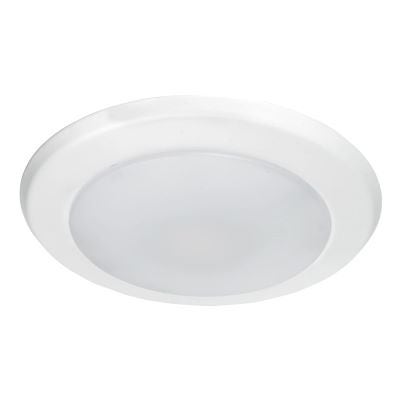

How to Choose Downlights: Factors to Consider
1. The Space’s Usage
Consider how the space you are lighting is used and what your lighting needs are for it. Then, determine how many lighting fixtures you need, what color temperature (CCT), and how many lumens are required.
For more information about lighting levels, check out our blog “IES Recommended Lighting Levels for Commercial and Industrial Spaces”
2. Location
Think about the location where these lights will be used. What is the ceiling height? How much space is there in the ceiling for installation? Will the light come into contact with insulation and need to be IC-rated and suitable for contact with insulation?
The ceiling height can affect which beam angle you choose for your downlight. Use wider beam angles such as 100°-120° for low to standard height ceilings (8-10 feet) for even light distribution. If your space has high ceilings (10-14 feet), use narrower beam angles such as 60°-90°.
The size of space above the ceiling for installation is a determining factor for which downlight to choose. If the ceiling is shallow, low-profile lights such as canless downlights or flush mount ceiling lights may be the best option. Other types of downlight housings work when there is more space above the ceiling.


3. Downlight Style
Now that you know the lights' usage and location, the next step is choosing your downlight style, including the trim, size, CCT, ratings, and certifications.
Downlight Trims
Our LED downlights are available in a variety of trims:
-
Smooth- This trim features a slim, flat surface without reflectors or ridges.
-
Baffle- This trim has concentric inner ridges that absorb excess light and glare.
-
Flush- With this trim, the light lays flat against the ceiling without any protrusion.
-
Gimbal- This trim lets the light be aimed by swiveling it.
-
Reflector- This is the most common trim on commercial downlights. It has a polished, reflective recessed surface that reflects and enhances the output.
Correlated Color Temperature (CCT)
The location and use can also affect the color temperature you select. Different locations or applications can benefit from various color temperatures. For example:
-
2700-3000K (warm white): Residential-style commercial spaces such as hotels, bed and breakfasts, restaurants, coffee shops, waiting areas, etc., can use warm white downlights to create a welcoming atmosphere.
-
3500-4000K (natural white): Natural white CCTs most closely resemble natural sunlight without being too yellow or blue. Natural white light is ideal for visual comfort and color accuracy. Natural white is usually used in offices, classrooms, retail stores, and other commercial spaces.
-
5000K+ (cool white): Cool white lights are used in industrial facilities, warehouses, healthcare facilities, etc. They provide crisp, high-contrast lighting.
LED Downlight Ratings & Certifications
There are various ratings and certifications for LED downlights to ensure the lights meet safe standards and criteria:
- IP rating—An ingress protection (IP) rating is a number that measures a fixture’s protection against dust, water, and other contaminants. The first number (1-6) indicates the level of protection against solid objects, like dust or debris. The second number (1-9) indicates its protection against moisture and water sprays. For instance, a light fixture rated IP65 will have a much higher resistance to water and debris than a fixture with a rating of IP54.
- IC-Rated/Fire-Rated— Insulation contact-rated (IC) fixtures, also known as fire-rated fixtures, are fixtures that can come in contact with insulation. IC-rated lights reduce fire risk. Non-IC fixtures require the insulation to be completely removed where the downlight is being installed.
- DLC— DLC certification, or DLC Listed, means that the product is of high quality and efficiency and has met the strict standards of the DesignLights Consortium.
- UL—Underwriters Laboratories (UL) is a safety certification that tests electrical safety, thermal performance, and compliance with industry standards. UL-certified products comply with national and international safety requirements by organizations such as OSHA, NFPA, IEC, etc. Many commercial or industrial lighting projects will require the use of UL-certified lighting fixtures.
- ETL—Intertek provides ETL certification, which signifies that a lighting fixture complies with North American safety, efficiency, and performance standards.
- CEC Title 24 JA8 Compliant—This California energy code requires high-efficacy lighting in residential buildings. This code ensures specific efficiency, lighting quality, and performance requirements are met. These standards are updated every couple of years.
4. Downlight Size
The size of the room, ceiling height, and the space’s needs will all play into the size of the downlights you use. Generally speaking, the larger the room and taller the ceiling, the bigger the fixture’s size will need to be.
If you are retrofitting, use the existing size of the cut hole. If you are installing for new construction, consider the following:
-
4-inch – Good for accent lighting and smaller spaces.
-
6-inch – Common for general lighting in most commercial areas.
-
8-inch+ – Used in high-ceiling industrial and commercial locations.
Frequently Asked Questions About LED Downlights
How to Replace Can Lights with LED Downlights?
Our can light retrofits are great for replacing your existing downlights with LEDs. Retrofit kits make switching to LEDs easy because they fit seamlessly into existing recessed or can housings and have an E26 screw-in base to connect the new LED downlight to the existing wiring. Then, they are snapped into place with the spring clips.
Are LED Downlights Dimmable?
Yes, LED downlights are dimmable, but it depends on the compatibility of the light fixture and the dimmer being used. Not all LED downlights are dimmable, so check product specifications for compatibility with 0-10V, 1-10V, TRIAC (MLV & ELV), and app-controlled dimming methods.
Why Do LED Downlights Flicker?
LED downlights can flicker because of various reasons. Some common reasons are incompatible dimmer switches, voltage fluctuations, issues with the power supply or driver, or loose wiring or connections.
How Long Do LED Downlights Last?
Our LED downlights last 50,000+ hours without the need for bulb replacements or maintenance. This length of time can vary depending on operation but 50,000 hours is a typical minimum.
How Do the Spring Clips Work on Downlights?
Spring clips are designed to secure the downlight into the ceiling. They are spring-loaded mechanisms that compress and expand against the interior of the can, resulting in a tight, tool-free install. Once the downlight is wired in, you simply compress the springs, position the light into the existing can, and release it.


